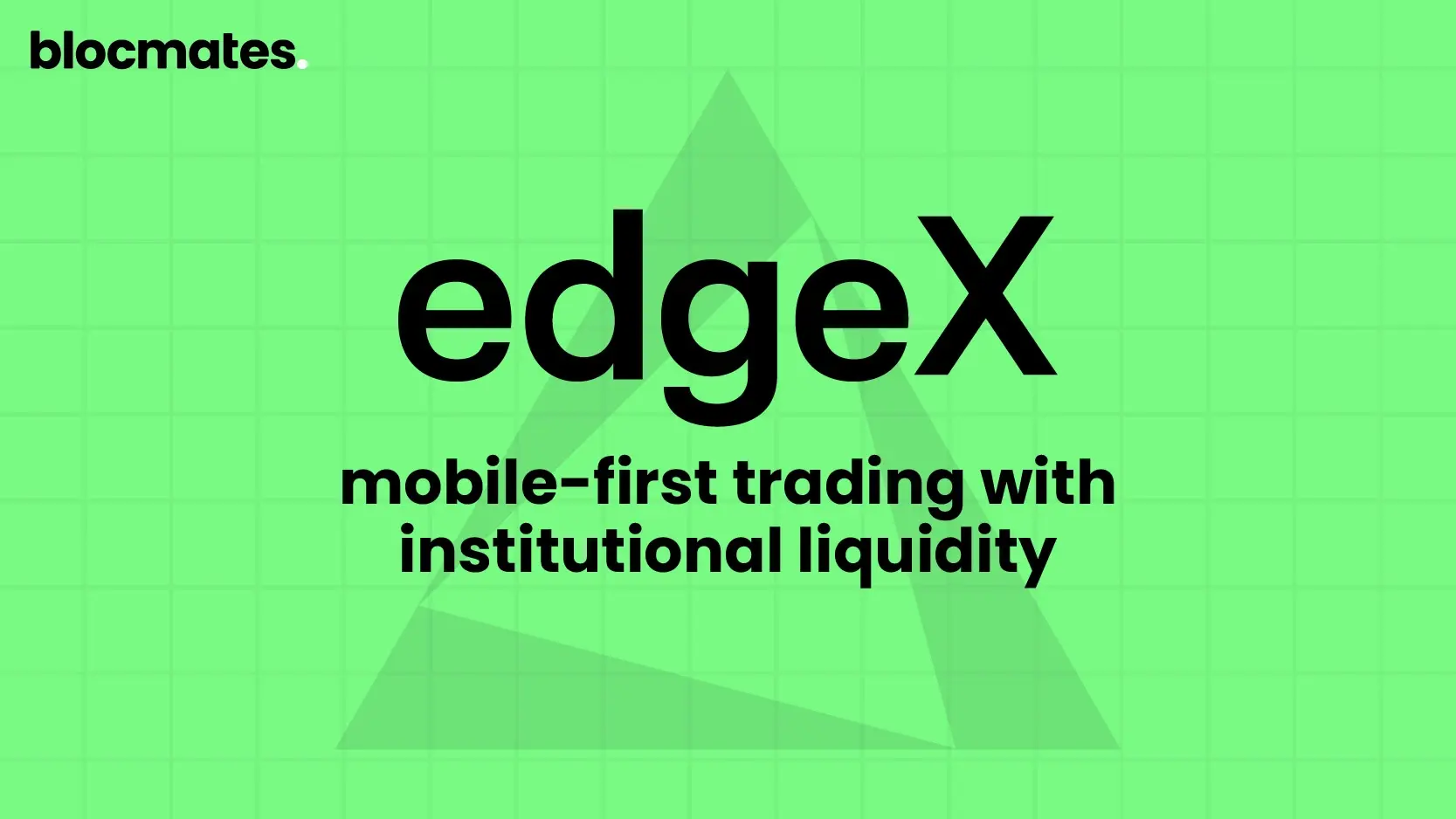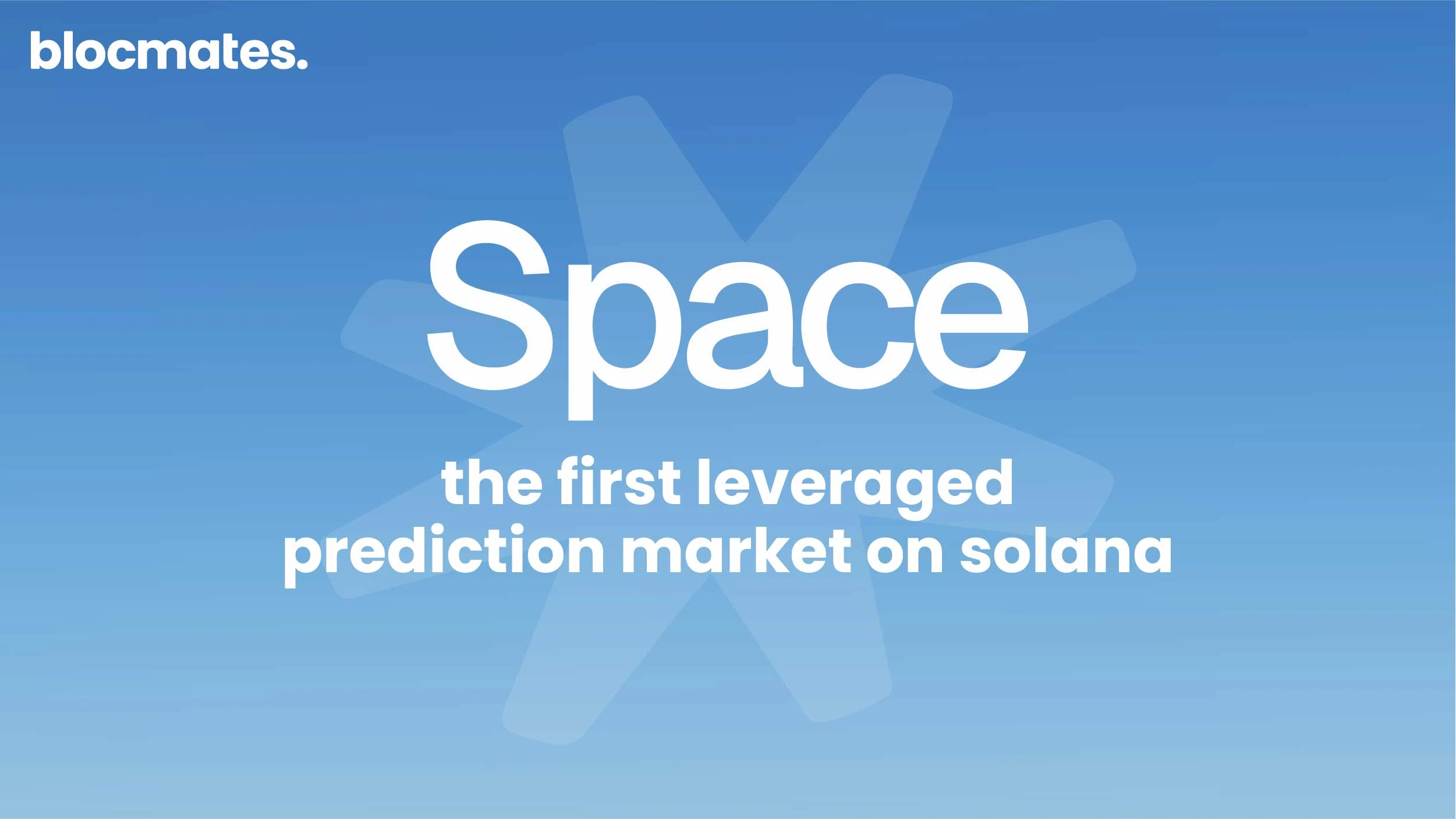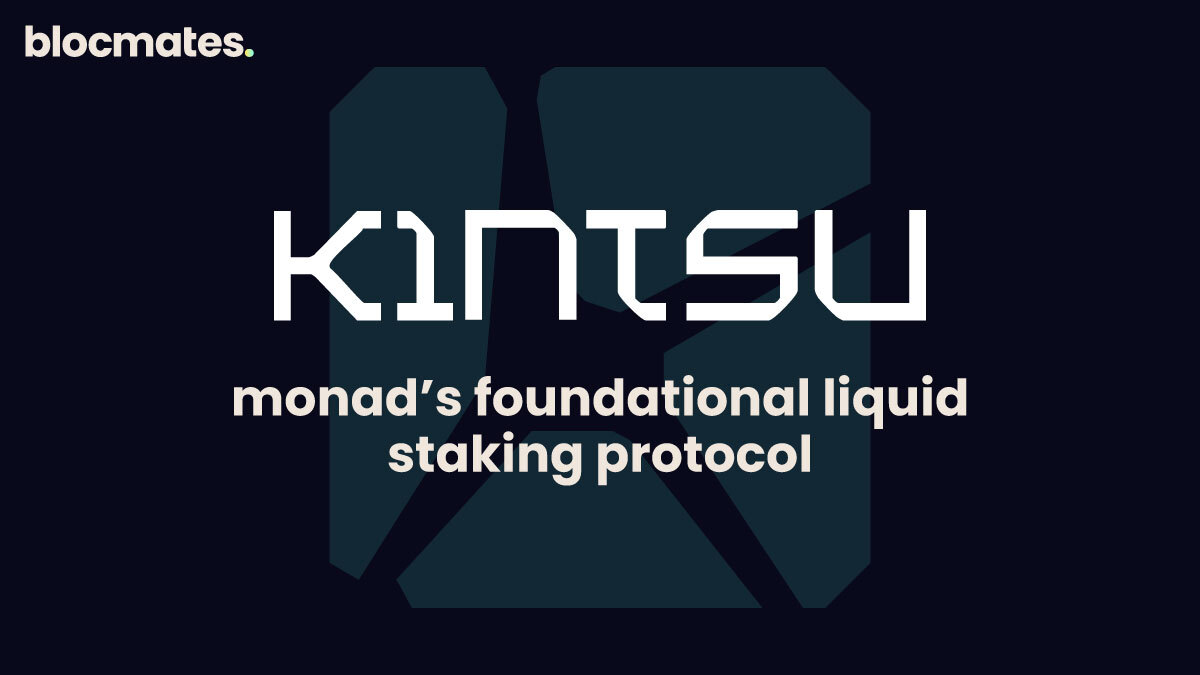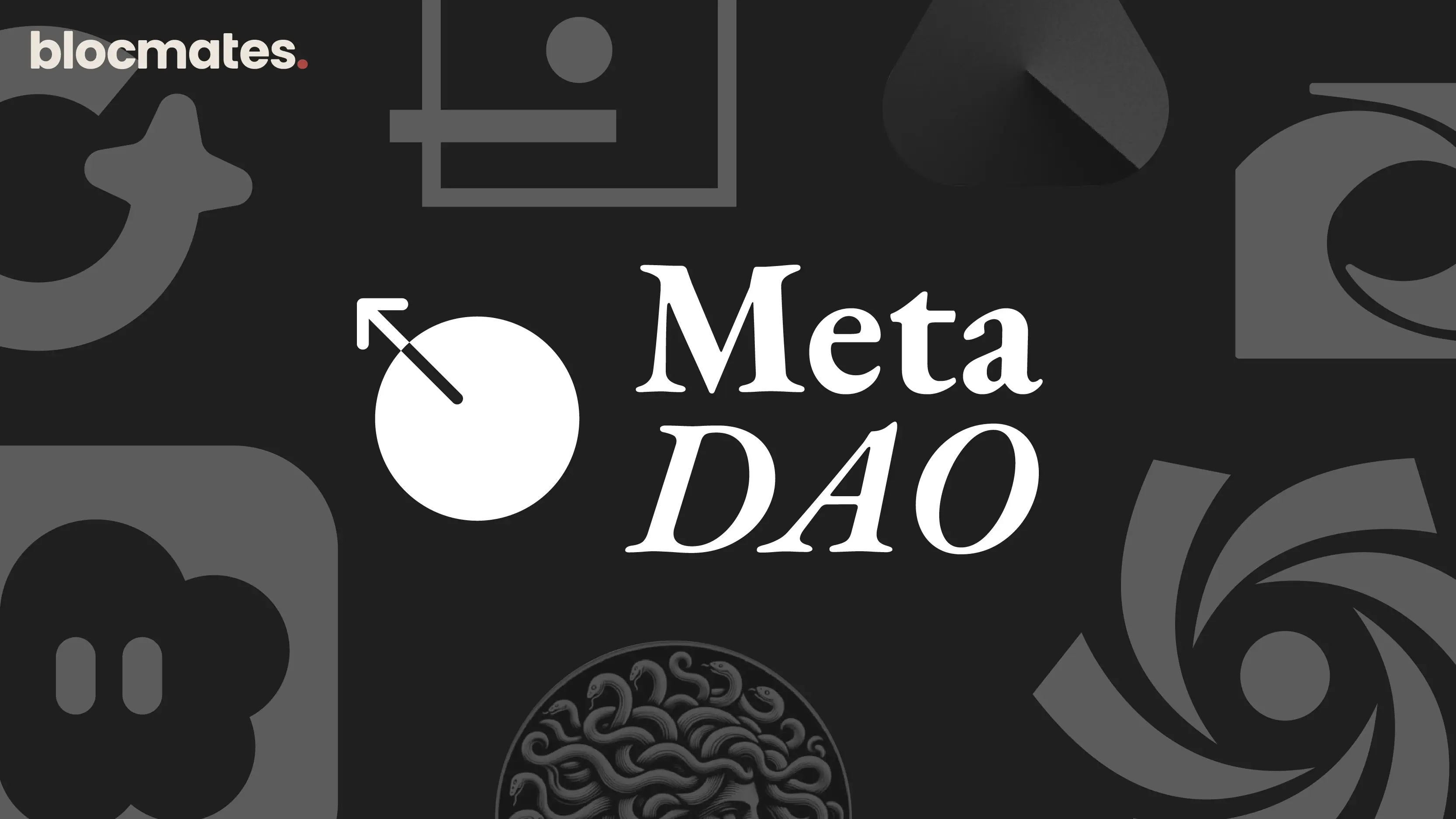Introduction

The emergence of crypto, blockchain tech, and web3 has allowed people to perform various on-chain and some off-chain actions. Swapping tokens on a DEX, participating in a governance vote, minting an NFT, deploying a smart contract, and more. These actions are all recorded and stored in the blockchain database. However, this data is seldom used, right? The man himself Vitalik Buterin in a whitepaper had proposed the concept of non-transferrable “Soulbound” tokens which represent reputation.
Anonymity and privacy have been byproducts of web3. Whilst everyone has a right to remain anonymous, and keep their private and crypto lives separate, imagine how useful it could be to attach a score of sorts to a user profile based on their on-chain actions, all the while keeping their private lives separate. A robust reputation system is a need of the hour. Many bad actors have misused the anon ethos of web3 to run millions of dollars worth of scams.
Now, I am not saying that having a widespread reputation system will ensure hacks and rug pulls don’t happen, but maybe we as a community will set norms of what’s reputable and what’s not, right? So if a developer has deployed a number of contracts that have been running bug-free for x number of days, they are considered reputable? Again, we’re probably far from a full-proof system. Regardless, the Metis team has taken invaluable steps in implementing such a system.
In the TradFi world, we trust large entities, as we know that if something were to go wrong, there are consequences and that these entities are accountable for their actions. This trust is somewhat built based on reputation i.e. past track record of well-thought-out decisions and operations. This is an oversimplified generalisation, even in the TradFi or CeFi world, one cannot blindly trust an entity, as seen in the case of Celcius for instance. But, as stated earlier, in the TradFi and CeFi world, there are consequences, and therefore Celcius is in court, and if any wrongdoings are found, they’ll be held liable for the same. However, there isn’t a concept of reputation in the decentralised world of crypto and web3, right? Well, that may have been until now, as Metis, an Ethereum L2 optimistic rollups scaling solution proposed an interesting solution.
Metis incubated a Social Reputation Engine, RPSMatrix. Through the Matrix protocol and Reputation Power System, individuals are empowered to gain recognition for valuable contributions brought to their communities, showcasing web3 credentials, achievements, and more. Sit tight as I try to explain this potentially revolutionary mechanism.
Another massive problem plaguing web3 is that of truly decentralised governance. Many alternate L1s and L2s are lacking a proper governance model. Sure, in theory, most claim to be “decentralised”, but are they? Even if they aren’t, is there a quantifiable roadmap in place that will lead them towards it? I have my doubts. I understand that all aspects of a dapp or a smart contracts blockchain cannot be decentralised, at least not immediately, but we need proper communication from projects in regard to it. Otherwise, what differentiates us from what we currently have in the web2 ecosystem?
The Metis team has come up with innovative ideas to help decentralise their project in a manner that hasn’t been seen before. Community Ecosystem Governance (CEG) and Community Verified Project (CVP) are designed with the idea of putting power where it belongs - in the hands of the people.
Decentralised governance has been one of the main sells of blockchain technology and the web3 ecosystem. However, we need to build a system that promotes increased decentralisation, not allow a handful of influential or rich whales to easily have control over the system, and hold centralised projects liable who’s wearing a mask of “decentralisation” and operating in a very centralised manner.
People need to understand the difference between using a decentralised network like Ethereum to deploy a project, and the actual project being decentralised. Trust me, many projects building on top of Ethereum are extremely centralised, with no intention of giving away control anytime soon. There’s decentralisation at the protocol layer i.e. the project deploying on top of a decentralised network, and then there is decentralisation at the application layer i.e. the project incorporating a strong governance mechanism to reach consensus on various topics within the community. CEG and CVP are two such initiatives by the Metis team that are designed to help with this glaring problem and help decentralise their ecosystem.
Metis formed a strategic partnership with Matrix protocol to fulfil their goal of on-chain reputation. In this article, I’ll explain the revolutionary system of Reputation Power by Matrix protocol, and how we may potentially transition from a completely trustless web3 - where the code is considered law to a trusted web3 - because after all, it is humans who write this code, and code is never corrupt, but we humans many times are. I will also explain the innovative governance model that MetisDAO has incorporated with CEG and CVP.

In case you’re unaware of Metis, and the METIS token, we’ve got you covered, you can read our previous in-depth guide on it, here.
Metis Governance Model
Before learning about the Reputation Power System by Matrix protocol, let us first understand the governance model Metis has incorporated. Decentralisation is at the heart of the Metis team. They want their L2 scaling solution to be the most decentralised chain compared to all competing L2s.
In order to achieve that, they introduced Community Ecosystem Governance (CEG) and Community Verified Project (CVP). These initiatives are meant to help decentralise the MetisDAO community.
Metis was founded on the belief that anyone, anywhere, can thrive in a decentralised economy. The founding team has built the infrastructure for this bright future. As the ecosystem continues to thrive, now is the time to shift the decision-making power to the Metisians - members of the Metis community.
Community Ecosystem Governance (CEG)

You can learn all about the CEG initiative here
Parts of the Metis project are governed under the Community Ecosystem Governance (CEG) framework. CEG enables a decentralised voting mechanism that allows anyone within the Metis community to participate. It empowers the people to use votes, and consequently influence the ecosystem. All Metis community members and developers can participate, and impact the decisions made at Metis.
Initially, community members will come together to vote for and select Community Verified Projects (CVP). In the future, voting will open to decide various other aspects of Metis, including but not limited to, policies, funding, etc.
A Community Verified Project can be thought of as an officially recognised project by the Metis community. Projects that get accepted, which is again decided by a vote, get the following perks:
- Boost Community Presence Via Social Media & Marketing Activity
- Twitter Spaces, & Telegram AMAs With the Metis Team
- Get Featured on the Weekly Wisdom Podcast
The project will need to be deployed on Metis Andromeda to be eligible to enter the CVP list.
This vote takes place on Snapshot. You can view the active and previous proposals, here. If you hold METIS at the time of the snapshot, you’re eligible to participate in the vote. At the moment, the CVP vote for UniDex, which is a multi-chain decentralised perpetual exchange is live. Looks like it will pass as well. In the past, proposals for large protocols like BeefyFinance, QiDao, etc. have successfully passed.
Of note is the fact that the Metis team has dedicated resources to ensure that the CEG and CVP initiatives get coverage. They have a Twitter account dedicated specifically to Metis governance, and a YouTube channel as well. Every week CEG episodes are published on the YouTube channel. No prizes for guessing what the last episode was about - it was UniDex duh. How many L1 or L2 networks can you think of, which have allocated resources in communicating their decentralised governance mechanism? I can’t think of any. Regardless, YouTube episodes are published every Friday. Voting thereafter remains open for 72 hours, it ends on a Monday. As previously stated, any METIS holder (on either L1 or L2) at the time of the snapshot is eligible to vote at no cost.
Community Verified Projects (CVP)
It’ll be worth it to go a little more in-depth and understand how the CVP initiative works. Again, these are protocols that have been deployed on Metis Andromeda and want official recognition of sorts from the Metis community. One of the main tasks of any L1 or L2 blockchain is to somehow develop a thriving ecosystem of projects. CVP can be thought of as an incentive mechanism of sorts for projects that have already or are planning on deploying on Metis. Such projects would want to be recognised by the community. Not only does it come with certain perks, but it also helps instil trust within the community of that particular project.
In a way, with CVP, the Metis team has decentralised the process of approving partnerships to the community.
For projects, this allows an opportunity to engage with the Metis community, educate, and build relationships. To prepare for voting, Metis encourages the community to interact with projects to learn more about the protocol. Project builders can participate in the CVP to increase social media engagement, and community discussion, and demonstrate the value of their projects during a Metis Governance Livestream.
Any project that passes the community review will be granted the title - Community Verified Project.

The CVP Flowchart
Participation Guide
For projects that are interested in applying for the CVP program, the Metis team has prepared in-depth educational content, to ensure that the process is seamless and frictionless. If you’re interested, you can view the entire process here.
Briefly, as you can view in the flowchart too, it is a two-pronged approach, consisting of first the Candidac forum and then the Snapshot vote.
In the first phase, a representative from the project will sign up for the forum and will post a proposal for the community to view and discuss. If the proposal meets certain requirements, it will then move to phase two, which includes the Snapshot vote, after the YouTube Livestream. You can visit the community forum here.
In phase two, the Snapshot vote takes place here. A majority pass (80% Yes vs. 20% No) will be needed to acquire the community verification.
Snapshot vote is cast by committing a number of METIS to the voting address. A minimum of one (1) METIS is required for voting. Delegated Metis for voting will be returned to voters after the voting process.
Proposal Requirements
For the projects that are interested in the CVP program, they need to meet certain criteria beforehand. This is enforced to ensure that only quality projects, with real-world use cases, apply. Broadly speaking, these requirements are:
- Tech Utility: The project can have a token, but a general rule of thumb is that users do not need to own/buy the token in order to use the platform.
- Security: To ensure the safety of the Metis community, the project needs to have an audit from a reputed audit service appropriate for that use case. For instance, an audit group that specialises in token audits is not robust enough to meet the requirements for auditing/reviewing a Metaverse project.
- Uniqueness Factor: In the open source world of web3, there are a lot of fork projects that do not innovate, nor do they bring anything remotely new to the table. Whilst, everything cannot be unique and groundbreaking, the Metis team rates those projects highly that are trying to build on bleeding edge tech, and trying to bring something new and unique. The project should include at least 1 unique utility that differs from other projects on the Metis network.
For smart contract-based applications - which are most of the applications, they need to provide the following:
- Audit or a Confirmation of a Scheduled Audit from a Trusted Audit Firm - Smart Contract Audit
- List of Verified Smart Contracts on Andromeda
If you’re interested, you can read all the proposal requirements here.
As part of the CVP program, a representative from the interested protocol will also need to record a video explaining the protocol, problems they’re trying to solve, the solution, traction so far, the opportunity, details about the founders, and a product demo.
This prerecorded video will premiere during the community presentation on YouTube.
Community Presentation
The Metis team will host a community live stream on YouTube, every Thursday at 3 PM UTC.
Project founders will explain their protocols via the prerecorded explainer video, and then answer any community questions live. Subsequently, the Snapshot vote will take place. Every project will have 15 minutes, including a 5-minute video presentation followed by 10 minutes for Q&A.
The Metis team encourages every project to maintain active communication with our community to help them understand the project mechanisms, team values, goals, and building trust.
Snapshot Vote
As previously mentioned, after the YouTube live stream, the Snapshot vote will become active. A majority pass (80% Yes vs. 20% No) will be granted as passing the community verification.
Governance Values
Candidac Execution Time
Proposal Review Time - How long a proposal is reviewed by the Moderation Team< 1 DayChange Request Time - How long a proposal is given to make the requested edits by the Moderation Team< 1 Day
Snapshot Vote
Percentage Approval80&Voting StrategyQuadratic VotingVoting Timeline3 Days
If you’re interested, here is the list of trusted audit firms.
The Reputation Power Matrix
Right then, this is where things start getting very interesting. As previously stated, the emergence of web3 has promoted anonymity with it. The nature of blockchain technology is such that users, community members, and developers can decide to remain anonymous. Now that in of itself isn’t blatantly destructive, as people have the right to privacy. However, this accepted anonymity allows bad actors to take advantage - which needs to stop.
Matrix protocol proposed an interesting solution to this problem with the Reputation Power Matrix. Metis incorporated the same to help reach their goal.
What Is Reputation Power?
Reputation Power is a portable and composable reputation earned through on-chain achievements and history. Reputation Power (or RP) can be earned on Matrix protocol for engaging and contributing to protocols, DApps and Decentralized Autonomous Companies (an evolution of DAOs) by performing actions or tasks such as deploying smart contracts, minting NFTs, voting in governance, and more.
Imagine owning web3 credentials, representing on-chain achievements for all of your community, frens, builders, and others to easily view on your individual profile.
How Does It Work?
Users can accrue RP by performing on-chain actions. Each specific action will have its value - in terms of Reputation Power awarded. For example, a DEX might value governance voting more heavily than trade executions, as an action that helps the project shape the future of its design; therefore, the project can award more RP for voting than trading on the DEX.
RP accrual is a bit like earning XP in a video game. Similar to a game, individuals can earn RP to level up and gain benefits like the ability to mint nontransferable NFT Badges on their Matrix profile, representing milestone achievements on-chain. NFT Badges are issued by MetisDAO or other DApps on Andromeda and are tied to a user’s wallet addresses on the Metis network. Basically, the Metis team has tried to gamify the entire process. Therefore, performing on-chain actions is now more incentivised, as you’ll be able to boast your achievements in front of your web3 frens and the process is itself gamified - so it won’t feel like a tedious chore.
Individuals will be able to build their own profiles, check out new RP features, and look up profiles for other users and DACs. Long-term community engagement is empowered, even adding a social element for communities to uniquely reward users for their engagement and contributions.
Reputation Power consists of two key products:
- Reputation Power System: The Polis backend which empowers every Andromeda DApp to deploy and issue their own NFT Badges as well as the Reputation Power Matrix which is the frontend user portal for interacting with all things RP.
- NFT Badges: As the first integration of Reputation Power, the Metis team and projects on the network will release the first wave of RP NFT Badges. NFT Badges will be issued to eligible users based on multiple categories such as early usage of Andromeda or governance voting.
Why Do We Need It?
Some of you may still have some lingering questions about why we need such a system in the first place. Well to compare it to web2, imagine how hard it’d be to navigate Amazon without product reviews, right? Reviews on product pages help us vet the authenticity of the Amazon seller, who we know nothing about. Similarly, the Karma score on Reddit is what the community believes your value to the community is, and based on it your future content will be valued.
Groundbreaking in its own rights, this reputation is what you’re renting in a way from Amazon as a seller on the platform, and from Reddit as a user on the social media network.
Reputation Power solves this lack of genuine ownership and enables new, exclusive web3 features such as composability (which are not possible in web2 reputation systems). These features can only exist on a decentralised network. The Matrix protocol reputation system, which will first deploy on Metis, is unified by the common thread of the Metis Andromeda Smart L2, which can verify the truthfulness of interactions and activity using Ethereum’s security.
Composable reputation means that a user does not have to start from scratch when they move to a new protocol or DAC, as the new users they interact with can see the sum of their contributions on the pseudonymous profile.
RP NFT Badges: NFT Badges Issued by Metis
Currently, there are 6 categories of badges that are available for Metis community members, they are:
- Metis Master: Awarded to members of the community who meet milestones including best content creators, CT thread of the day winner, best meme creator, engaged in the community, active Metis voice on crypto Twitter, etc.
- Metis Citizen: Awarded to members of the community who have participated in at least one Metis Governance vote.
- Andromeda Builder: Awarded to developers with wallet addresses who have deployed smart contracts.
- Metis Fren: Awarded to anyone who has attended Metis in person or online events including Metis Fests, side events, meetups, conference booths, specific online activities, etc.
- Metis Artiste: Awarded to artists who have wallet addresses that have deployed NFT smart contracts on Metis, minted a collection on an NFT Marketplace within the Metis network, or minted a Metis-themed NFT on an Ethereum Mainnet marketplace.
- Metis Mosaic: Awarded to artists who have won an NFT Badge design competition.
Resources
Similar to their efforts of decentralised governance, even for the RP Matrix initiative, the Metis team has allocated a lot of resources.
Website: https://rp.matrix.tech/
Whitepaper: https://drive.google.com/file/d/13VlfmhuZlZwQrK95aBTqsfXQVqCr59TP/view
Twitter: https://twitter.com/RPSMatrix
Medium Announcement: https://metisdao.medium.com/the-future-is-here-matrix-reputation-power-ccd877158573
YouTube Video: https://www.youtube.com/watch?v=XVhaQrps5rk - Not from the Metis team
Conclusion
In conclusion, and whilst doing my research for this article, I can safely say that the Metis team is super aligned with the community, and wants to grow the project alongside and with the community and not in isolation.
The decentralised governance model of the CEG and CVP initiative is just the start. The team will continue decentralising various other facets of its operations. As I stated earlier, if not for decentralisation, then why are we here? Assets can be tokenized, NFTs can be minted, and GameFi apps can be built on very centralised databases as well. We as a community need to strive towards total decentralisation in the foreseeable future.
As for the Reputation Power Matrix, it is truly a revolutionary solution for the Metis ecosystem. The Matrix protocol is built on top of Metis, but will have multichain support in the future. Hopefully, going ahead more ecosystems will adopt similar composable solutions. Anonymity is all well and dandy, but we need to showcase more data points in this pseudonymous world.
Well, that’ll do it for today. I hope I was able to explain Metis’ governance philosophy and the Reputation Power Matrix well.


















.webp)

.webp)
.webp)

%20(1).webp)



























































%202.webp)


.webp)

.webp)
.webp)
.webp)



.webp)












%20the%20Next%20Big%20Unlock%20in%20AI.webp)
.webp)
.webp)

.webp)
.webp)
.webp)


.webp)
.webp)










.webp)


.webp)









.webp)







.webp)




.webp)


























.webp)







.webp)















.webp)

.webp)
.webp)

.webp)














.webp)

.webp)


.webp)








.webp)




